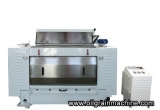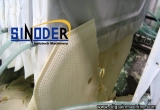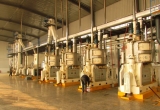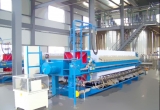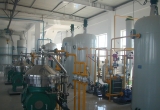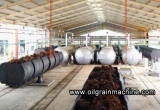Solution
Latest News
Vegetable Oil Process
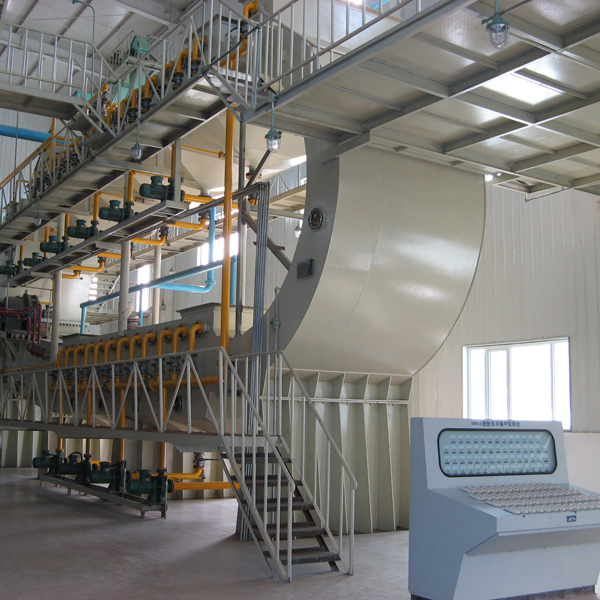
Solvent Extraction Plant Process Technology and Solution
We're here to help: Easy ways to get the answers you need.
Product Introduction
Solvent Extraction Plant Process Technology and Solution
Brief Introduction of Solvent Extraction Plants
Solvent Extraction, as the name suggests is a process to extract the oil from oil bearing materials by means of Solvent, Solvent used being normal Hexane – a petroleum bye product.
The plant is designed to extract oil directly from oil seed containing less than 20% oil like soyabean after flaking or it extracts oils from prepressed or fully pressed cake of seeds containing more than 20% oil like sunflower, peanuts, cotton seed, palm kernel, canola, copra, castor and variety of other materials.
Sinoder’s proven design is simple, robust, operator friendly flexible for easy change over of the process material and with inbuilt safety features. Sinoder Solvent Extraction plants have been operating for more than three decades.
The extractor is horizontal in construction a concept with universal acceptance, infact most of the extraction plants working through out the world have adopted horizontal design of extractor. The extractor works on counter current, moving bed principal with variable bed height and variable speed mechanism permitting excellent penetration and percolation of solvent for absolute extraction. The low speed of extractor conveyor ensures almost no maintenance. Distillation takes place under vacuum and desolventising of meal is done in liberally designed desolventiser Toaster. For solvent recovery adequate capacity condensors and vent air stripping system is provided.
Sinoder Process Of Solvent Extraction Comprises Of:
Preparatory Section
Extraction unit
Distillation unit
Meal Toasting
Recuperation unit
Meal Finishing Section
DTDC for large capacity plant
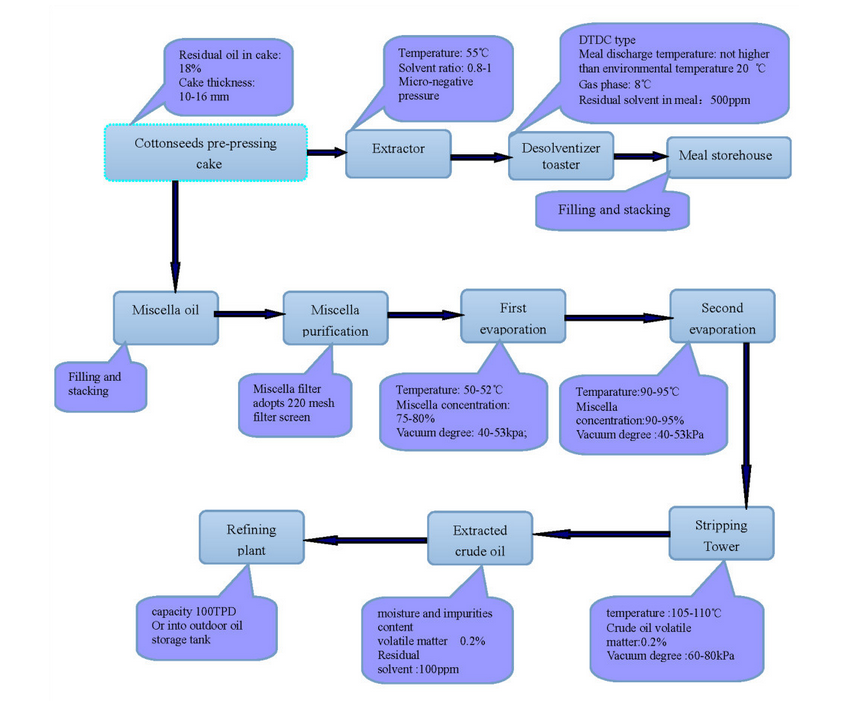
Extraction process
The pre-pressed cake or flake, firstly enter into the sealed scraper blade to avoid the solvent gas escaping because of the section without screw blade in the sealed auger. Sunflower seeds enter into the box-chained loop type extractor counter-currenting with the solvent, the grease is extracted. Miscella condensity increase from 2% to more than 25%. Miscella discharged from extractor and into miscella filter, then the leached meal in the miscella tank enter into evaporation system through 1st evaporation feed pump and finally drop-in DTDC out from wet meal drag conveyor.
Evaporation process
Using the secondary steam desolventized from DTC desolventizer and produced by steam-jet pump to heat and evaporate micella in the first long-tube evaporator. Export temperature reaches to 58-62℃ and condensity reaches to more than 65%. Then, micella enters into the second long-tube evaporator in which the temperature is heated to 105-110℃ by indirect steam and the condensity reaches to more than 95%. Then miscella enters into stripper in which residual solvent in oil will be removed, the export temperature reaches to about 105℃ and the general volatile of the extracted crude oil is less than 0.30%.
Desolventizing process:
Wet meals discharged from the bottom of extractor enter the top of DTDC and land on the predesolventizing trayers where thery are heated by the indirect steam, thus, some solvent in meal is evaporated and meal temperature is risen; Predesolventized meals land on predesolventizing trayers where they use the second steam in desolventizing trayers to predesolventize solvent from meal, then, meals enter desolventizing layers in which direct steam is injected.Direct steam is sprayed into the meals through the bottom holes, and distill the solvent from meal by using steam in order to remove all solvent; Desolventized meals land on the following drying and cooling layer to dry and cool meals,cooled meals land on meal scraper blade from automatic material controlling gate on the bottom of cooling layer, and then they are entered into meal storehouse.
Condensation recovery process
Extractor is equiped with a seperate condenser, 1st and 2nd evaporation share one condenser. Low and high temperature of solvent gas both from 1st and 2nd evaporation enter into the condenser after its neutralization, which greatly reduces the load of condenser and improves the efficiency of condensing. Stripping and analyzing share one condenser, the non-condensable gases from extractor and other condensers enter into the vent gas recovery system through the final condenser.
In the recycling system, the cold paraffin will absorb the solvent gas and the final nonsolvent gas will be discharged through fire resistance valve.Paraffin absorbed the solvent gas can be also called rich oil, after heating by oil-oil heat exchanger and steam, the rich oil will enter into desorber for desorption, and into condenser after changing solvent into gas, the final cooled paraffin can be recycled.
Advanced Technology of Solvent Extraction Plant
1.Absorbing the world’s leading core extraction technology, design and develop a process which is efficient, economical and reliable. Adopting boxchained loop type extractor can effectively achieve low residual oil, low solvent consumption and low failure rate of equipment. Thus, customers will have little cost and investment, and profit maximization will be achieved.
2.Full automatic computer control system is adopted in extracting process, adjust automatically and operate stably.
3.Negative pressure technology is adopted in condensate system. Using the secondary steam which comes from the DTDC as the heat source of first evaporation, thus can maximum save the energy consumption.
4.Stainless steel heat exchange tubles and multistage baffling make the condenser have a high heat transfer efficiency, also the water consumption is low.

Sinoder Solvent Ring Extractor Machine
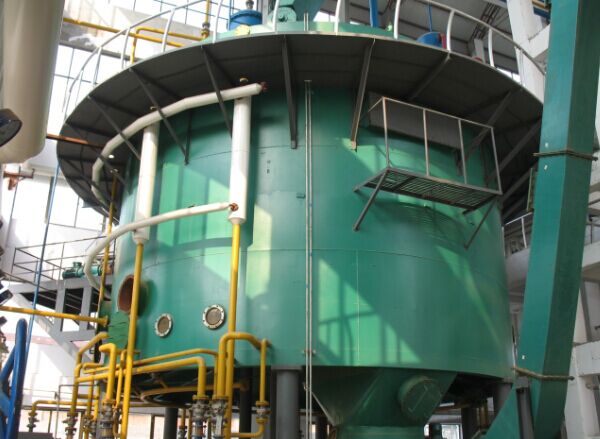
Sinoder Solvent Horizontal Rotary Extractor Machine
Technical parameters
FAQ
Relevant
